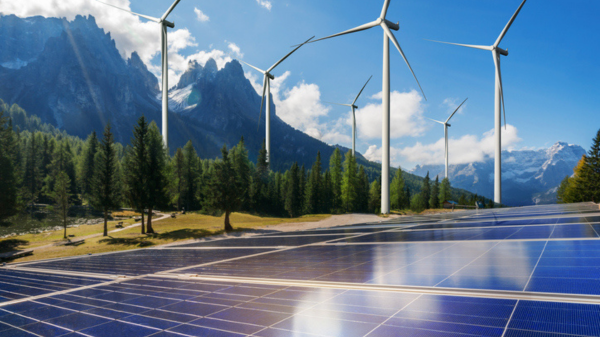The U.S. Energy Information Administration (EIA) released its latest report on government subsides for energy markets, which shows renewable power sources, particularly wind and solar, and energy efficiency programs, received the bulk of federal subsidies.
The report, “Federal Financial Interventions and Subsidies in Energy in Fiscal Years 2016–2022,” categorized federal financial subsidies and interventions into four categories, including tax expenditures (tax breaks or credits), direct expenditures (grants, loans), research and development (R&D) support, and loan guarantees.
The report’s accounting does not include state and local programs like renewable portfolio standards. The EIA says in its overview that state programs do represent “significant” subsidies; and since it doesn’t include those in the report, it is not a truly comprehensive look at how government impacts energy markets.
“As a result of this exclusion and other exclusions, this report does not encompass all subsidies that affect energy markets and should, therefore, be viewed in context and with related information from other sources,” the EIA states.
Renewables Get the Lion’s Share
Renewables like wind and solar received the largest share of the subsidies, 46 percent, at $83.8 billion. The next largest category belongs to end-use energy efficiency-related programs, which received 35 percent of federal energy subsidies, or $64.8 billion.
The majority of the subsidies traditional energy sources receive also have to do with green policy. For natural gas and petroleum liquids, for example, a large portion of the direct expenditures go to the U.S. Department of Transportation’s “clean diesel” grant programs.
U.S. Oil Subsidies ‘Virtually Zero’
Subsidies for oil and gas, beside those tagged for green projects, are practically nonexistent, says Andy May, writer and retired petrophysicist.
“In the U.S. oil and gas subsidies are virtually zero, except for LIHEAP (Low Income heating allowance), which isn’t really a subsidy to the industry,” May said.
The United States is somewhat unique in this among major oil producing countries, May says. Other major oil producing governments dole out massive subsidies for their oil industries, especially for those where the oil industry makes up a more significant portion of the country’s economy.
“Internationally, it is a different story; Venezuela and Saudi Arabia have huge subsidies,” May said.
Indeed, Saudi Arabia spends more on fossil-fuel subsides than any other country, about $7,000 per person. Venezuela likewise has a tight grip on its oil industry, subsidizing fuel to the point that Venezuelans have some of the cheapest fuel in the world. But even in those countries, the subsidies don’t go to the industry, but rather are consumption subsidies that reduce the prices consumers pay.
‘Subsidies Are Outrageous’
The breakdown of federal energy subsidies—which shows renewables receive the vast majority—is not surprising, says H. Sterling Burnett, Ph.D., director of The Heartland Institute’s Arthur B. Robinson Center on Climate and Environmental Policy.
“The fact that renewable energy sources receive the vast bulk of energy subsidies has been an open secret for decades, with only progressives, environmental scolds, and evidently until now the Biden administration, not admitting the fact,” Burnett said.
The sheer scale of the subsidies is offensive, especially since renewables technologies have received them for decades now and still cannot compete in the market, says Burnett.
“The subsidies are outrageous on their face—billions of dollars each year for technologies that promise ‘just a little more money and a little more time, and we can compete on our own,’” Burnett said. “That lie has been repeated for decades as those pushing green energy have systematically begun to dismantle our previously well-functioning electric power grid and transportation system with a system prone to repeated blackouts and EV fires.”
Making matters even worse is the fact that renewables are failing to provide the expected amount of power compared to how much they are subsidized, Burnett says. The EIA report shows that renewables receive the largest share of subsidies despite making up only 21 percent of domestic electricity production.
“On a per-unit-of-energy-produced basis, renewables have worse payouts than gambling at casinos in Las Vegas,” Burnett said. “A lot of money for little power, while politically connected green elites laugh all the way to the bank and their posh meetings of the World Economic Forum.”
Linnea Lueken (llueken@heartland.org) is a research fellow with the Arthur B. Robinson Center on Climate and Environmental Policy at The Heartland Institute.
For more on renewable energy subsidies, click here.


























